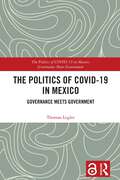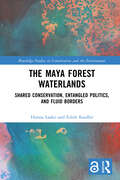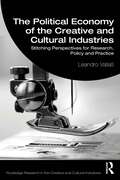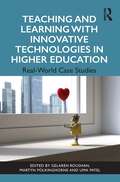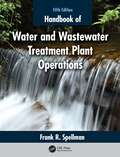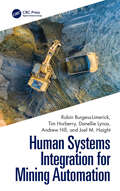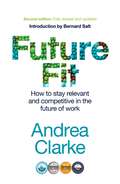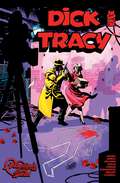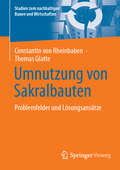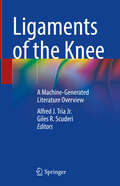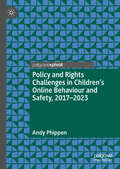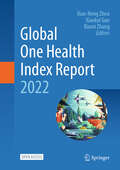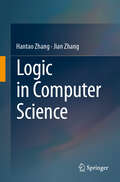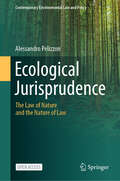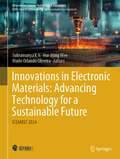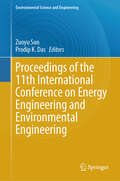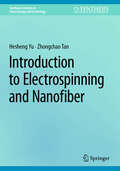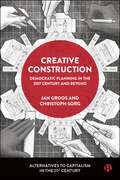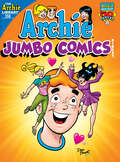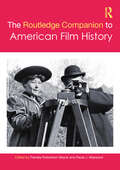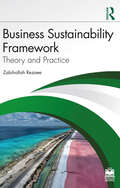- Table View
- List View
Psychoanalysis Through the Lens of Narcissism (Evolutions in Psychoanalysis Book Series)
by Orna AfekThis critical historical review of psychoanalytic theory and practice reflects on the place of psychoanalysis in contemporary Western culture in light of its preoccupation with the self and associated failure to emphasize the role of close interpersonal relationships as central to the human psyche.The elusive presence of the separate other in psychoanalytic theory is discussed vis-à-vis the life stories of Freud, Winnicott, and Kohut. The underlying narcissistic bias in the theories of these three pioneers of psychoanalysis – classical Freudian drive theory, Winnicott’s theory of the parent-infant relationship, and Kohut's theory of self-psychology – is traced back to their narcissistic personality traits, which impacted their views and perceptions and obscured the fundamental centrality of interpersonal relationships per se in the inner world of the individual, with far-reaching implications for psychoanalytic thought and practice.With fresh insights on the subjectivity of personality theories, the core features of the narcissistic personality, and the implications of the narcissistic position for theory and clinical practice, this book will interest psychotherapists, psychoanalysts, and other professionals in the field, specifically those interested in personality diagnosis, narcissism, attachment theory, and psychotherapeutic approaches and psychoanalytic theories in general.
The Politics of COVID-19 in Mexico: Governance Meets Government (The Politics of Pandemics)
by Thomas LeglerThis book evaluates the factors behind Mexico’s painful experience with the Covid-19 crisis, a country that ranked fifth in the world for the number of deaths caused by the virus. Through a series of vignettes, its authors point to pandemic politics as the culprit. With a focus on the nexus of global governance and government in the Mexican case, they underline the politicized nature of domestic, international, and transnational responses to the pandemic. The chapters analyse the multiple political dimensions that affected the ability of intergovernmental and governmental authorities to construct timely, effective, and equitable health security against the COVID virus, including symbolic politics, medical populism, global political economy, disease diplomacy, epistemic communities, and federalism. This volume builds an interdisciplinary analysis of the politics of pandemic governance bridging political science, international relations, public policy and public administration, and public health.The Open Access version of this book, available at http://www.taylorfrancis.com, has been made available under a Creative Commons Attribution-Non Commercial-No Derivatives (CC-BY-NC-ND) 4.0 license.
The Maya Forest Waterlands: Shared Conservation, Entangled Politics, and Fluid Borders (Routledge Studies in Conservation and the Environment)
by Hanna Laako Edith KaufferThis book examines the entanglements and blurred edges of nature conservation and geopolitical relations in the borderlands of the trinational Maya Forest.Maya Forest is an umbrella term for transboundary conservation developed by scientists and conservationists in the 1990s to protect the threatened rainforest in the borderlands of Mexico, Belize, and Guatemala. Currently, the Maya Forest is a biodiversity hotspot composed of a network of protected areas and heritage sites. However, issues related to water, land, and forests have often been treated as separate political units, and not as part of the same history. Written by two authors with decades of hands-on experience in this region, this book sheds light on the complex dynamics by which conservation and natural resource management geopolitically shape borderlands such as the Maya Forest. The book introduces the novel concept of forest waterlands as borderlands and fluid edges, which are now subject to concern by conservationists. These are entangled spaces in which conservation, peoples, and politics interact, connect, and disconnect with the nexus of waters, forests, and lands. The book sheds light on the building and mapping of the Maya Forest ecoregion, with particular attention to water as an often neglected, but unifying element. It showcases how the Maya Forest is a distinct region characterized by transformations entangled with the Maya, trails of biological stations, the shared history of chicleros (chewing-gum hunters), fluid international rivers and transboundary basins, and various geopolitical discrepancies. It offers a contemporary glimpse into the Maya Forest’s intertwined bio- and geopolitics, which urge us to rethink borders and boundaries.This book will be of great interest to students and scholars of nature conservation, global environmental politics, geopolitics, borderlands, international relations, and natural resource management.
The Political Economy of the Creative and Cultural Industries: Stitching Perspectives for Research, Policy and Practice (Routledge Research in the Creative and Cultural Industries)
by Leandro ValiatiThe creative and cultural industries (CCIs) are often seen by markets as critical drivers of economic growth and by governments as feasible ways to foster development. The link between these two perspectives lies in the CCIs’ capacity to generate both economic value and social innovation simultaneously. While markets value their direct contribution to GDP and employment, governments recognise their potential to catalyse broader societal development through cultural expression, innovation and community engagement.Divided into key sections covering theoretical foundations, economic growth and development, innovation, policy and data analysis, this book presents a multifaceted view of CCIs’ role in modern economies and societies. It challenges traditional economic models, advocates for a holistic approach to socio‑economic development and examines the transformative impact of digital technologies on creative work. This work makes significant contributions to the field by advancing the political economy of CCIs, synthesising current debates and clarifying critical concepts. It explores innovative approaches to measuring the economic impact of CCIs and proposes a roadmap for harnessing their full potential in driving sustainable and inclusive growth. With its flexible structure allowing for customised learning experiences, this book is an essential resource for understanding the complexities of creative industries in our rapidly changing world.This interdisciplinary volume bridges theory and practice, providing invaluable insights relevant to students of CCIs, economics, arts and cultural management, as well as for academics, policymakers and practitioners.
Teaching and Learning with Innovative Technologies in Higher Education: Real-World Case Studies
by Gelareh Roushan Martyn Polkinghorne Uma PatelTeaching and Learning with Innovative Technologies in Higher Education provides a wealth of expertly curated case studies demonstrating how educators and technologists can leverage emerging digital technologies to enhance students’ experiences. As university staff integrate transformative digital learning tools into their pedagogical practices with a mix of excitement and consternation, new insights are needed into the opportunities, success and limitations of these fast-evolving tools. This book presents real-world examples of effective, digitally enriched approaches to teaching delivery and standards, student engagement and inclusivity, immersive simulations and environments and beyond. Spanning a diverse, comprehensive range of digital technologies deployed in higher education, these practical case studies will guide novice and experienced academics across disciplines in updating their instructional skills and course content for new generations of learners.
Handbook of Water and Wastewater Treatment Plant Operations
by Frank R. SpellmanThe Handbook of Water and Wastewater Treatment Plant Operations is the first thorough resource manual developed exclusively for water and wastewater plant operators. Now regarded as an industry standard, this fifth edition has been updated throughout, and it explains the material in easy-to-understand language. It also provides real-world case studies and operating scenarios, as well as problem-solving practice sets for each scenario. Key features: Updates the material to reflect the developments in the field Includes new math operations with solutions, as well as over 250 new sample questions Adds updated coverage of energy conservation measures with applicable case studies Enables users to properly operate water and wastewater plants and suggests troubleshooting procedures for returning a plant to optimum operation levels Prepares operators for licensure exams
Human Systems Integration for Mining Automation
by Tim Horberry Robin Burgess-Limerick Danellie Lynas Andrew Hill Joel M HaightHuman Systems Integration for Mining Automation is the professional’s guide to understanding the issues, approaches, and pitfalls associated with mining automation from a human perspective. This book delves into a timely and fast-developing issue in mining and the wider minerals industry - the design and deployment of automation. The book approaches this from a “Human Systems Integration” standpoint in which the technical and human-related aspects are jointly considered as part of an integrated, automated mining system. This accessible and readable title offers a wider Human Systems Integration framework that can be applied to mining projects. It is based on an established framework that has been developed and used successfully in other work. The framework is backed up with information obtained from mines in Australia, the USA, Canada, Sweden, and Chile and original equipment manufacturers such as Caterpillar, Komatsu, Sandvik and Epiroc. Every reader of this book will recognise the essential benefits of human systems integration for mining automation.This book will be an ideal read for industry professionals including systems engineers, safety engineers, mining engineers, human factors engineers, and engineers working on developing and deploying automation in mining and related industries including rail, road transport, and process control. It will also be of interest to students, researchers, and academics in related fields.
Future Fit: How to stay relevant and competitive in the future of work
by Andrea ClarkePrepare for the future with the eight skills needed to become future fit.Winner, Australian Business Book of the Year 2019Finalist, UK Business Book Awards 2020Finalist, Australian Career Book of the Year 2019 The need for skills that defy disruption has never been so urgent, as traditional workplace models give way to confronting new rules of engagement. If you&’re looking for job security, growth and acceleration in a radical new workforce, then Future Fit is the place to start. Award-winning author Andrea Clarke shares her experience, expertise and tactical advice on how to become truly future fit. &‘The future of work is here and it&’s about talent – your talent. It&’s about upgrading our human skills because they&’re landing differently in a hybrid environment,&’ says Clarke. &‘These skills are powerful differentiators in a dynamic and demanding new workplace.&’ Using her experience from a vibrant and varied career, Clarke explores the eight real skills we need for the future: Reputation Capital, Adaptability, Communication, Networking, Creativity, Problem solving, Leadership and Learning. A former Washington, DC, news reporter, Iraqi humanitarian aid worker and EdTech pioneer, Clarke founded FutureFitCo in 2012 – a business that trains emerging leaders to accelerate these core competencies. The Future Fit Digital Program, adapted from this book, is delivered globally to multi-national organisations. &‘Future Fit is a potent toolkit for anyone wanting not only to keep up with the head-spinning pace of workplace change, but to position themselves to excel within it.&’Sydney Morning Herald
Dick Tracy Valentine's Day Special (Dick Tracy)
by Alex Segura Michael MoreciWhen a string of murders occur on the set of a romantic movie filming in The City, Dick Tracy is on the case. But in this world of glitz and glamour, where everyone tells a story but no one tells the truth, Tracy races against the clock to separate fact from fiction and stop this killer before they fulfill their promise to strike again–on Valentine&’s Day!
Umnutzung von Sakralbauten: Problemfelder und Lösungsansätze (Studien zum nachhaltigen Bauen und Wirtschaften)
by Thomas Glatte Constantin von RheinbabenDiese Publikation aus der Reihe „Studien zum nachhaltigen Bauen und Wirtschaften” untersucht Umnutzungen denkmalgeschützter Sakralbauten zu profanen Zwecken in Deutschland und welche Chancen und Herausforderungen sich dabei ergeben. Dabei werden städtebauliche und architektonische Aspekte, aber auch gesellschaftliche Bedenken untersucht. Auch die Wirtschaftlichkeit und ökologische Aspekte solcher Vorhaben werden berücksichtigt.
Ligaments of the Knee: A Machine-Generated Literature Overview
by Giles R. Scuderi Alfred J. TriaThis is the first machine-generated literature overview on the ligaments of the knee. Introduced and curated by experts in knee surgery, it provides a sound summary of the current knowledge base on knee ligamentous anatomy, kinematics and surgical procedures. The auto-summaries have been generated by a recursive clustering algorithm via the Dimensions Auto-summarizer by Digital Science handled by Subject Matter Experts and the editors of this book. The editors of this book selected which SN content should be auto-summarized and decided its order of appearance. Please be aware that these are extractive auto-summaries, which consist of original sentences, but are not representative of its original paper, since we do not show the full length of the publication. Also note that only published SN content is represented here, and that machine-generated books are still at an experimental stage.
Policy and Rights Challenges in Children’s Online Behaviour and Safety, 2017–2023
by Andy PhippenThis book evidences the cyclical failures of online safety policy and challenge conventional policy and educational approaches to tackling online harms, and provide a robust argument for a critical, evidence-based approaches which align with the needs of those we claim to wish to protect. It argues for a move away from knee jerk, headline grabbing and subjective policy development. In drawing parallels from the drug policy world, contrasting the increasingly progressive and evidence based policy making in this space compared to prejudiced, emotive developments in online harms.
Global One Health Index Report 2022
by Xiaoxi Zhang Xiao-Nong Zhou Xiaokui GuoThis Open Access book intends to report the new results of the Global One Health Index (GOHI). The content of this book underlines the functions and importance of developing the evaluation tool (GOHI) for global One Health practice, shows the results of GOHI score in 160 countries/territories and key findings in details, and provides different policy recommendations to UN agencies, countries, and communities to promote the wide application of the One Health approach. A pilot study was conducted in 2021, and its related publications are collected in one section of the book. The book is likely to be of interest to researchers, practitioners, policy-makers, and stakeholders in applying One Health who wish to learn about the development, results, key findings, and policy recommendations of GOHI study.
Logic in Computer Science
by Jian Zhang Hantao ZhangMathematical logic is an important basis for mathematics, computer science and artificial intelligence alike. This book provides a comprehensive introduction to various logics, including classical propositional logic and first-order predicate logic, as well as equational logic, temporal logic, and Hoare logic. In addition, it presents proof procedures for classical logics and decision procedures for checking the satisfiability of logical formulas. The book assumes no background in logic. It presents logics as practical tools for solving various problems in artificial intelligence and formal verification. Accordingly, it is well suited for (junior and senior) undergraduate and graduate students majoring in computer science or mathematics. Each chapter includes roughly a dozen exercise problems, so as to help the reader understand the concepts and techniques discussed.
Designing Responsive City Centers: Applicable Urban Design Guidelines (Design Science and Innovation)
by Amir Shakibamanesh Mahshid GhorbanianThis book explores the history and evolution of city centers and provides practical guidance for designing successful city centers, emphasizing the importance of urban design guidelines in achieving this goal. With a focus on community engagement, environmental quality, and economic benefits, the book offers a roadmap for creating vibrant, dynamic, and sustainable city centers that enhance the overall quality of life for their communities. The book offers guidelines for urban design, which can be used to apply the main principles and solutions related to landscaping, building architecture, and access systems. The guidelines manifest development policies as key solutions and govern the qualitative aspects of the plan, enabling the creation of responsive city centers that benefit their communities. An invaluable resource for anyone interested in urban design and its role in shaping the cities of the future, this book is an essential tool for creating successful and sustainable urban environments.
Ecological Jurisprudence: The Law of Nature and the Nature of Law (Contemporary Environmental Law and Policy)
by Alessandro PelizzonThis open access book explores the rise of ecological jurisprudence, a transformative legal theory that challenges traditional legal boundaries. Drawing on over 15 years of research and teaching, the book offers a comprehensive theoretical exploration of this new approach to law, via a comprehensive examination of a wide range of initiatives from around the world, as well as a deep theoretical engagement with the implications of this novel legal theory. Covering a breadth of topics never before brought together with such clear and wide-ranging scope, this book points to the emergence of an ecological jurisprudence not only as a profound transformation of legal norms, but as a radical reimagination of law itself, and serves as a vital resource for scholars and practitioners interested in the future of environmental law Along with Stone’s Do Trees Have Standing? (1972), Cullinan’s Wild Law (2002), and the Ecuadorian Constitution (2008), we can now name Pelizzon’s Ecological Jurisprudence as a key milestone in the field. (Herman F. Greene, JD, DMin, Thomas Berry Scholar-in-Residence, The Earth Law Center) An immense gift to the field and to generations of lawyers to come, Ecological Jurisprudence contains teachings from which one could learn for a lifetime. (Katarina Hovden, University of Copenhagen) Alessandro Pelizzon's Ecological Jurisprudence is deeply-rooted in how the law can best serve the natural world, inspiring future lawyers with the kind of jurisprudence the natural world so urgently needs to exist. (Maria Mercedes Sánchez, Former Coordinator of the United Nations Harmony with Nature Programme) Pelizzon coins the term ‘ecological jurisprudence’ and mobilises it to create deep normative foundations for future environmental law developments. Any serious environmental scholar will have to engage with him because of the breadth and depth of what he achieves in this book. (Professor Afshin Akhtar-Khavari, QUT)
Innovations in Electronic Materials: ICEAMST 2024 (Advances in Science, Technology & Innovation)
by Hui-Ming Wee Mario Orlando Oliveira Subramanya K NThis book delves into the cutting-edge field of electronic materials, focusing on their pivotal role in shaping a sustainable and technologically advanced future. This comprehensive book brings together a selection of contributions that explore the transformative impact of electronic materials on various industries, including health care, aerospace, energy, and electronics. The book places a spotlight on the forefront of technological innovation, with a particular emphasis on nanoelectronics. Readers will navigate through the technological landscape of electronic materials, uncovering its significance in driving sustainable technologies that address the emerging challenges and also explore the emergent properties of electronic materials, such as multifunctionality, reliability, and scalability. Through in-depth analysis and case studies, this book showcases how these properties propel researchers in electronic material science toward ground-breaking solutions with real-world applications. This book serves as a collaborative and descriptive platform, fostering interdisciplinary discussions and knowledge exchange. It acts as a bridge between various fields, providing a space for researchers, scientists, and engineers to share cutting-edge discoveries and advancements. The book is more than a collection of articles; it is a forward-looking exploration of the dynamic nature of material science and technology. It highlights how researchers and engineers are pushing the boundaries, leveraging the remarkable properties of materials to create solutions that enhance efficiency, innovation, and sustainability.
Proceedings of the 11th International Conference on Energy Engineering and Environmental Engineering (Environmental Science and Engineering)
by Zuoyu Sun Prodip K. DasThis book contains the proceedings of the 11th International Conference on Energy Engineering and Environmental Engineering (ICEEEE 2024), which was held on August 17–18, 2024, in Xiamen, China. Jointly organized by Beijing Jiaotong University and Newcastle University, ICEEEE 2024 created an authoritative forum for the dissemination and discussion of energy and environmental engineering advancements. Offering a compendium of state-of-the-art research and practical findings, the proceedings bring to light the latest innovations in renewable energy technologies and systems, energy efficiency and conservation, environmental pollution and control, and the pursuit of sustainable development and green cities. Intended for a wide audience, including academics, industry professionals, and policymakers, this book provides valuable insights and serves as a key reference for anyone invested in the future of energy engineering and environmental stewardship
Introduction to Electrospinning and Nanofiber (Synthesis Lectures on Green Energy and Technology)
by Zhongchao Tan Hesheng YuThe target audience of this is senior undergraduate and graduate students, researchers, and engineering practitioners who are about to enter or entering the fields of nanofiber, nanofiber materials, electrospinning, and the like. This book is expected to prepare the readers, rather than providing the details of any specifics. This type of book is necessary because many researchers in training need basics to jump start the projects related to the research topics above. They also need to understand the potential applications to be direct their research. However, this type of book is missing, regardless of many handbooks or books focused on a specific field. The first half of the book introduces the basics of electrospinning and nanofiber technologies, leading the readers into the field step by step. It is expected to set a solid foundation for researchers in training (e.g. graduate students) before the jump into the particular research project (e.g. PhD thesis project). The contents are ordered such way that junior researchers normally follow. This book can also be used as a general reference book for those who are interested in the subjects. Each chapter is written as independent as possible, with references listed at the end of the chapter. Readers who can dig deep into the field after reading the chapters and the references listed.
Creative Construction: Democratic Planning in the 21st Century and Beyond (Alternatives to Capitalism in the 21st Century)
by Jan Groos and Christoph SorgDemocratic planning allows us to effectively address the multiple crises of our time through cooperative modes of collective coordination. Given the destructive consequences of contemporary capitalism, such a structural alternative to market economies is needed more than ever. This accessible work examines various approaches that theorise, practise and nurture a creative construction towards varieties of democratic planning. Drawing from current socio-economic and ecological movements, it explores what future non-capitalist democratic planning could look like. Bringing together important voices in the ongoing debates from scholars to activists, this volume proposes an interdisciplinary and innovative approach to democratic planning in the 21st century and beyond.
Archie Double Digest #358 (Archie Double Digest #358)
by Archie SuperstarsBRAND NEW STORY: The MLJ Museum is proud to welcome the New Crusaders for an event that’s sure to be magical, except they’re nowhere to be found! That’s not the only weird thing going on. Does anyone else think that those toys look a little TOO lifelike? If only there was a teenage witch around to help spell out what’s really going on.
The Language of Mothers
by Rain WrightThe Language of Mothers is a hybrid memoir grounded in the power of prose and poetry. It is an imaginative tapestry of women' s storytelling that punctures narrative craft to illuminate the inheritance of domestic trauma and the voicing of familial stories that are healing spaces that carry through time. The Language of Mothers is about two mothers caught in abusive relationships, impoverished with children, with few avenues of escape. These stories shed light on the culture of American motherhood as a failure for women, perpetuating a system of patriarchal ideals that only values the nuclear family as whole spaces of abundance, love, and worth. At nineteen, Rain Wright' s mother left Dronfield, England, traveling through Europe before landing in New York in the turbulent 1960s. Swept up in the changing societal wave, Elizabeth, her mother travels to California, where she meets her future abuser, Rain' s father. This memoir is the story of Elizabeth' s courageous escape with three young children, and it is the story of Rain' s escape decades later. The Language of Mothers navigates the inheritance of trauma, finding that storytelling and art, for both women, become the impetus for healing. Elizabeth packs her children' s belongings in black plastic bags and hides them in the brush along Elk Ridge Road, in California, making her daring escape with the help of friends and an ex-lover. She flies with her children across an ocean to the safety of Hawai?i, where she finds art, lomi lomi, music, and security. After Elizabeth' s passing from breast cancer in 1996, her stories, inherited from years of car rides around Hawai?i Island, are the language of mythmaking. The Language of Mothers is an intimate look at why women stay too long in abusive relationships and an act of defiance and regenerative love. Rain' s story is a tapestry of early childhood trauma as witness to her mother' s abuse, domestic terror at the hands of her children' s father, and her own escape narrative. The Language of Mothers deeply sees the aftereffects of domestic abuse, including her eldest daughter' s suicide attempts, her middle daughter' s strive for perfection, and her youngest daughter' s need for control through anorexia. Women' s stories can heal. Rain interweaves traumatic parts of her past but recounts acts of love, telling her daughters stories and becoming their storyteller.
The Routledge Companion to American Film History (Routledge Media and Cultural Studies Companions)
by Paula J. MassoodPresenting new and diverse scholarship, this collection brings together original essays that explore American film history from a fresh perspective.Comprising an introduction and 34 chapters written by leading scholars from around the globe, and edited by Pamela Robertson Wojcik and Paula J. Massood, this collection offers discussions of the American film industry from previously unexplored vantage points. Rather than follow a chronological format, as with most film histories, this Companion offers a multiplicity of approaches to historiography and is arranged according to often underdeveloped or overlooked areas in American film, including topics such as alternate archives, hidden labor, histories of style, racialized technologies, cinema’s material cultures, spectators and fans, transnational film production, intermedial histories, history in and about films, and the historical afterlives of cinema.An exciting collection for serious film studies students and scholars interested in new perspectives and fresh approaches to thinking about and doing American film history.
Psychoanalysis and Governance: Discourse and Decisions, Identities and Futures
by Kristof Van Assche Monica GruezmacherPsychoanalysis and Governance makes a cogent argument for the use of psychoanalytic perspectives in the understanding of governance, the process of collective decision-making that maintains and reshapes communities.This book is highly relevant to those interested in the ever-expanding field of applications of psychoanalysis and for all those willing to observe the discursive and affective underpinnings of public policy, administration, and planning. It locates the potential for self-analysis and self-transformation within governance, yet also indicates governance as the confluence of diverging understandings of the ideas of community and governance itself, as the place where competing desires and variegated patterns of fears and hopes collide and hold the transformational potential to destabilize the community.Building on Freudian, Lacanian, and other psychoanalytic traditions, the book enriches our understanding of governance, the way communities remember and forget, are haunted by the past, remain untransparent to themselves yet also retain the possibility of reinvention, of imagining alternative selves, new futures, and discover paths to move in that direction. This book will be a suitable for psychoanalysts, planners, and all those interested in informed governance.
Business Sustainability Framework: Theory and Practice
by Zabihollah RezaeeProviding a practical and accessible introduction to a complex yet essential area, Business Sustainability Framework enables readers to integrate and report on sustainability from business and accounting perspectives.The author explores how organizations of all sizes can adopt an integrated strategic approach to business sustainability, encompassing planning, performance, reporting, and assurance. Grounded in the latest research, the book includes topics such as shareholder and stakeholder governance models, business sustainability factors and initiatives, sustainability theories, standards and best practices, the use of AI, and financial reporting and auditing initiatives.An ideal introduction for advanced undergraduate and graduate students of sustainability governance, performance, risk, reporting, and assurance, this textbook equips readers with the knowledge and skills necessary to become successful business leaders in sustainability.

